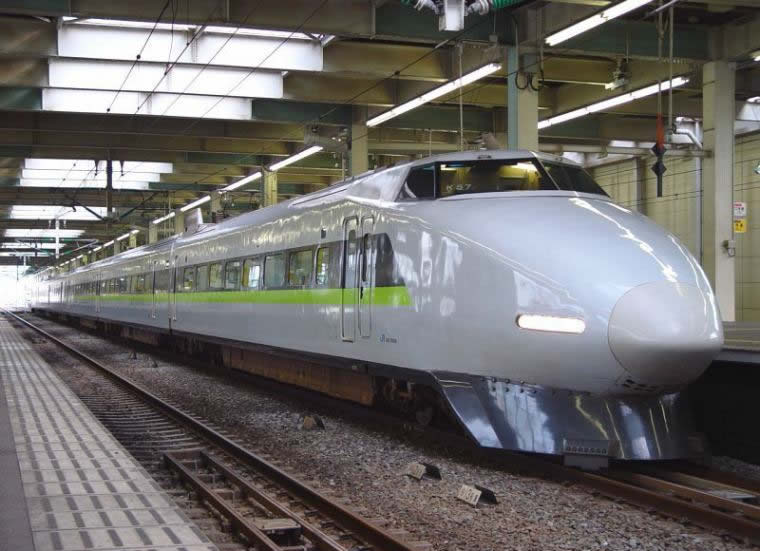- 100 Series Shinkansen
Infobox EMU
name = 100 Series Shinkansen
imagesize = 240px
caption = 100 Series Kodama trainset at Hiroshima Station, July 2003
InService = 1985 - Present
Manufacturer = Nippon Sharyo, Kawasaki, Hitachi, Kinki Sharyo, Tokyu Sharyo
Family =
Built = 1,056 vehicles (66 sets)
Refurbishment =
Formation = 4 or 6 cars per trainset (16 cars in past)
Operator =JR West
Depots = Hakata
LinesServed =Sanyō Shinkansen ,Hakata Minami Line
CarBody = Steel
CarLength = 25,000 mm (intermediate cars), 26,050 mm (end cars)
CarWidth = 3,383 mm
CarHeight = 4,488 mm
MaxSpeed = 220 km/h (230 km/h for the V Sets now withdrawn)
Weight =
Capacity = 4-car P sets
250
6-car K sets
394
"Past:"
"12-car G sets"
1,031 (68 Green + 963 Standard)
"16-car X sets"
1,325 (124 Green + 1,201 Standard)
"16-car V sets"
1,285 (126 Green + 1,159 Standard)
"16-car G sets"
1,319 (166 Green + 1,153 Standard)
Acceleration = 1.6 km/h/s
Deceleration =
Traction =
Power =
Gauge = 1,435 mm
Voltage = 25 kV AC, 60 Hz overhead
Brakes =
SafetySystem =The 100 Series Shinkansen, with its characteristic shark nose, were the second generation
Shinkansen design, produced between1984 and1991 for theTōkaidō Shinkansen andSanyō Shinkansen lines; the earliest units have now been withdrawn from service, and the series was retired from the Tōkaidō Shinkansen line in September2003 . A common misconception is that they were designed before the 200 series trains; their numbering is such because in the days of JNR Shinkansen types running east of Tokyo were given even numbers and those west of Tokyo odd numbers, hence they were given the next odd number in line after 0, 100.They differ visibly from the earlier 0 Series in that the nose profile is more pointed. Another not so visible difference for the 16-car sets was that not all cars were powered; the
driving car s on each end were unpowered, as were the two bilevel center cars. Some later production sets had powered driving cars and four unpowered bilevel trailers in the middle instead. The bilevel trailer cars contained a combination of restaurant cars, and first class compartments, or open-plan first class seating and first class compartments, or open-plan first class seating and refreshment cars.Now removed from front-line service, 100 series sets have been reformed into smaller 4 and 6 car sets for the slower Kodama services on the Sanyō Shinkansen line. These 4 and 6 car trains do not have bilevel cars.
References
* " [http://www.h2.dion.ne.jp/~dajf/byunbyun/types/100.htm "100 Series"] ", Dave Fossett, [http://www.h2.dion.ne.jp/~dajf/byunbyun/ byunbyun Shinkansen] .
Wikimedia Foundation. 2010.
